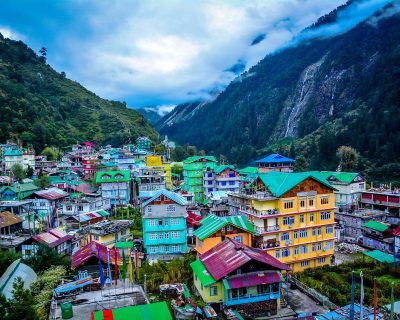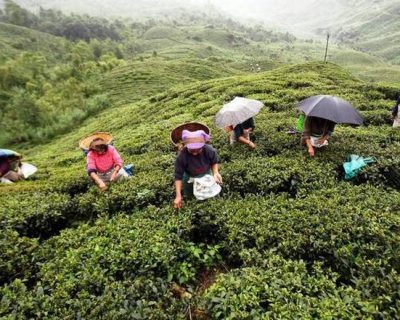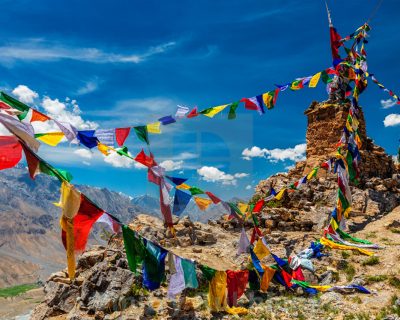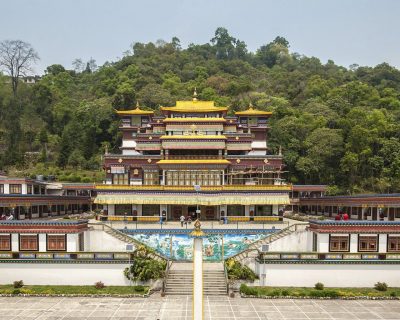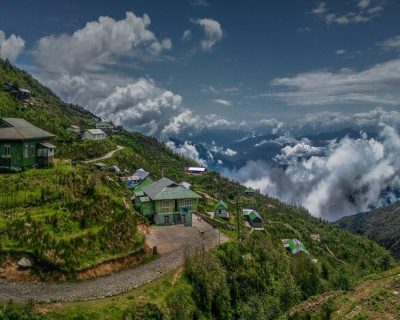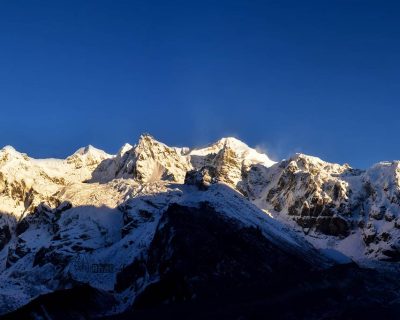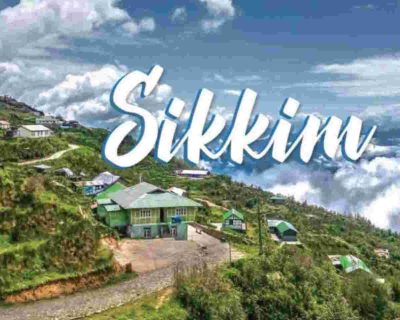Discover Sikkim & Darjelling
Exclusive Sikkim And darjeeling tour
Sikkim General Info:
Area: 7096 Sq.Kms.
District: 4
Sub-division: 16
State animal: Red Panda
State Bird: Blood Pheasant
State Flower: Dendrobium Nobile (Nobile Orchid)
State Tree: Rhododendron Niveum
Population: 6,10,577
Literacy Rate: 81.4%
Best Time to visit: March to June and October to December
Sikkim, state in India, is located in the north eastern part of the country, in the eastern Himalayas. It is one of the smallest states in India. Sikkim is bordered by the Tibet Autonomous Region of China to the north and northeast, by Bhutan to the southeast, by the Indian state of West Bengal to the south, and by Nepal to the west. The capital is Gangtok, in the south eastern part of the state
A part of the Eastern Himalaya, Sikkim is notable for its biodiversity, including alpine and subtropical climates, as well as being a host to Kangchenjunga, the highest peak in India and third highest on Earth. Sikkim’s capital and largest city is Gangtok. Almost 35% of the state is covered by the Khangchendzonga National Park.
Long a sovereign political entity, Sikkim became a protectorate of India in 1950 and an Indian state in 1975. Its small size notwithstanding, Sikkim is of great political and strategic importance for India because of its location along several international boundaries. Area 2,740 square miles (7,096 square km).
People and Culture: The People of Sikkim consist of three ethnic groups, that is, Lepcha, Bhutia and Nepali. Communities of different hues intermingle freely in Sikkim to constitute a homogenous blend. Hindu Temples coexist with Buddhist Monasteries, Churches, Mosque and Gurudwara. The predominant Communities are Lepchas, Bhutias and Nepalese. These myriad Cultures has produced a quintessential Sikkimese Culture that encompasses all ways and walk of life, but has also managed to preserve their own identity. These can also be seen in the various places of Worship, Festivals and Cultural dances that are celebrated through the year
The native Sikkimese consist of the Bhutias, who migrated from the Kham district of Tibet in the 14th century, and the Lepchas, who are believed to have migrated from the Far East. Tibetans reside mostly in the northern and eastern reaches of the state. Migrant resident communities include Bengalis, Biharis and Marwaris,who are prominent in commerce in South Sikkim and Gangtok.
Languages: The official languages of the state are English, Nepali, Sikkimese (Bhutia) and Lepcha. Additional official languages include Gurung, Limbu, Magar, Mukhia, Newari, Rai, Sherpa and Tamang for the purpose of preservation of culture and tradition in the state.
Nepali is the lingua franca of Sikkim, while Sikkimese (Bhutia) and Lepcha are spoken in certain areas. English is also spoken and understood in most of Sikkim. Other languages include Dzongkha, Groma, Hindi, Majhi, Majhwar, Thulung, Tibetan, and Yakha.
Districts of Sikkim
Sikkim has four districts – East Sikkim, North Sikkim, South Sikkim and West Sikkim.The district capitals are Gangtok,Mangan, Namchi and Gyalshing respectively. These four districts are further divided into 16 subdivisions; Pakyong, Rongli, Rangpo and Gangtok are the subdivisions of the East district. Soreng, Yuksom, Gyalshing and Dentam are the subdivisions of the West district. Chungthang, Dzongu, Kabi and Mangan are the subdivisions of the North district. Ravongla, Jorethang, Namchi and Yangyang are the subdivisions of the South district.
East District:
The east district is the most populated with Gangtok being the main administrative and business centre. Apart from the modern attractions of the capital town, in the east you will also find the beautiful Tsomgo Lake, the historically important Nathula pass, as well as many monasteries and temples. Gangtok is the capital of Sikkim and heart of all the business hubs.
North District:
Perhaps the most beautiful of the districts, the North offers an exquisite experience for the lover of Nature and alpine scenery. Yumthang alone is enough to satiate the most demanding, with its panoramic Valley of Flowers. During springtime the lush meadows abound with delicate wildflowers that carpet the Valley floor in a rich riot of colors. A must-see here are the Hot Springs and the vibrant Sikkimese tribal culture and customs. 67 kms from Gangtok is the Mangan District Headquarter of North District. A three day music festival is held at Mangan in December every year.
West District:
West Sikkim is replete with history and religion. This is where the first Chogyal of Sikkim was consecrated at Yuksum in 1642 and this is where some of the holiest and most important monasteries of Sikkim were established, including Dubdi and SangaCholing, the first monasteries to be built in Sikkim. West Sikkim is beautiful terrain abounding in lakes and waterfalls and also has great trekking routes. Gyalshing is the head quarter and town of the West District.
South District:
South Sikkim, the smallest district belies its size with its variety of tourist attractions. With stupendous view of the Khangchendzonga range, the south of Sikkim is a fairy tale land of picturesque villages and high hills. Near Namchi, the district headquarters is Samdruptse Hill, the site of the 135 feet tall statue of Guru Padmasambhava. In the south too are Tendong Hill and Maenam Hill, of mythical importance to the Lepchas and Bhutias, as well as the tourist destination of Ravangla which hosts the annual Pang Lhabsol festival with great pageantry. Namchi is the district headquarter of South Sikkim which is 78 kms from Gangtok.
Best time to visit Sikkim
The best time to visit any place depends on the type of activities the traveler wants to indulge in. Sikkim is blessed with quite a pleasant weather and a trip to Sikkim can be planned at any time of the year depending on the interest of the traveller. Still , It is imperative to know the best time to visit Sikkim because this Northeastern state tops the wish-list of many travellers across the globe. Every season of this state has something different to offer to it’s tourists. This is because states lying in the north-east part of India are known for their unparalleled natural beauty and significant opportunities for adventure sports. Sikkim is place well-known for its delightful natural beauty and dramatic landscapes. Most people visit Sikkim just to experience the charm of the colourful flora and fauna as well as the serenity of hilltop Buddhist monasteries such as Pemayangtse. However, best time to visit Sikkim is either between March and May or October and mid-December. If you want to witness the blooming natural beauty in Gangtok best season to visit would be in spring, from March to May. Autumn, on the other hand, brings the clear view of Himalayan Range. If you want to capture the picturesque view of Himalayan Range, then October to December is the best season to visit Sikkim. During this time you can be part of various festivals like the ManiramBhanjyang Tourism Festival where you can enjoy local homestays among many other things. You can also be a part of the Cherry Tea Festival as well as Red Panda Winter Festival. These festivals showcase a different side of Sikkim
To visit Sikkim foreigners must obtain Restricted Area Permit (RAP) previously known as Inner Line Permit from Sikkim Tourism Officers on the strength of valid Indian Visa. The Nationalities of Pakistan, Bangladesh, China, Maymmar and Nigeria will not be issued Permit without the prior approval of the Ministry of Home Affairs, Government of India, New Delhi.
Protected Area Permit (PAP) for various places in Sikkim are issued as follows:-
- East District:-
- Tsongo – Baba Mandir – permit are issued by Police Check Post for Domestic Tourist. Foreign tourist are allowed till Tsongo Lake, permit is issued by Tourism & Civil Aviation Department and Police check post.
- Nathula Pass – Permit is issued by Tourism Department and Police Check Post for domestic tourist.
- West District:-
- Dzongri Trek – Permit is issued by Adventure Cell of Tourism & Civil Aviation Department, Govt. of Sikkim
- Singalila Trek – Permit is issued by Adventure cell of Tourism & Civil Aviation Department, Govt. of Sikkim
- North District:-
- Yumthang – Permit is issued by Police check post for Domestic Tourist and for foreigners permit is issued by Tourism Department and Police Check Post
- Yumesamdong – Permit is issued by Police check post for Domestic Tourist and for foreigners permit is issued by Tourism Department and Police Check Post
- Thangu-Chopta Valley – Permit is issued by Police Check post for Domestic Tourist and for Foreigners permit is issued by Tourism Department and Police check post. Foreigners must apply through a Sikkim Tourism registered Travel Agent in groups of two people or more for visiting these areas.
- Gurudongmar – Permit is issued by Police check post for domestic tourist and for foreigners permit is issued by Tourism Department till Thangu.
- Green Lake Trekking Permit is issued by Tourism Department after obtaining a valid permit from Ministry of Home Department, New Delhi.
- South District:-
- Restricted Area Permit is a valid permit for trekking anywhere in the South District for Foreign Tourist.
- Alpine Mountaineering Expedition permit is issued by Tourism Department after obtaining valid permit from Home Department , Government of Sikkim , Gangtok, for the following peaks as per the Home Department Notification no: 25/Home/2006 dated 20/3/2006
TinchenKhang 5603 metres ( West Sikkim)
Jopuno 5935m (West Sikkim)
Freys peak 5830m(West Sikkim)
Lama Angden 5868m( North Sikkim )
BrumKhangse 5433m ( North Sikkim )
- National park and Wildlife Sanctuary entry permits is issued by Forest Department at Gangtok.
Foreigners Entry Formalities
Foreigners must obtain Inner Line Permit (ILP) to visit Sikkim. These can be obtained from all Indian Missions, Sikkim Tourism Offices at New Delhi, Kolkata, District Magistrates Office of Darjeeling, Siliguri, and Rangpo on the strength of an Indian Visa. The 30 days duration Permit is issued on the spot without any delay provided photocopies of the passport and visa along with two pass port photos of the applicants are made available. The permissible duration of the stay for foreign tourists is 30 days initially.
The State Government is authorized to extend the same by a further period of 30 days. The extension of the permit can be obtained from FRO at Gangtok and office of Superintendent of Police of the North,West and South Districts.
For those interested in going for trekking in the interior region of the state, the Tourism and Civil Aviation issues Protected Area Permit (PAP) at Gangtok which is available for certain specified area for groups consisting of two or more foreigners subject to condition that the trekking programme is arranged through a registered travel agency.
Darjeeling is a town in India’s West Bengal state, in the Himalayan foothills. Once a summer resort for the British Raj elite, it remains the terminus of the narrow-gauge Darjeeling Himalayan Railway, or “Toy Train,” completed in 1881. It’s famed for the distinctive black tea grown on plantations that dot its surrounding slopes. Its backdrop is Mt. Kanchenjunga, among the world’s highest peaks.
Darjeeling is famous throughout the world for the tea it grows and the great view of Kanchenjunga range of mountains that it offers. It is also known for its richness in cultural & natural heritage and the famous toy train that has been declared a UN heritage.
Best Time to visit Darjeeling:
Summer

